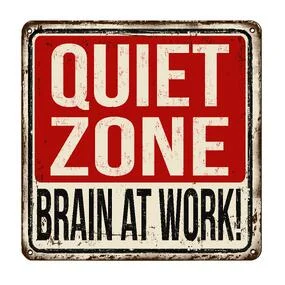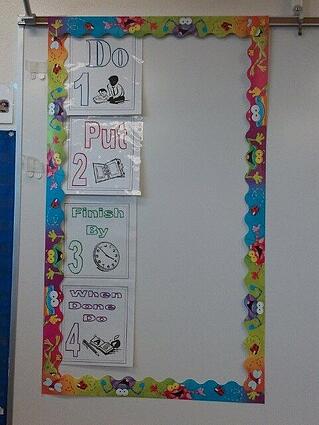One of my most powerful teaching and learning memories is from a two-day workshop I attended on nonverbal communication in the classroom. I believe it’s true—when the student is ready, the teacher appears!
Getting students’ attention is a critical first step for any lesson. Here’s where expectations and tone are set for all learning ahead. There are tons of strategies for getting attention – with the same goal for students to STOP what they are doing, look at the teacher, and prepare to listen.
- Freeze Body
For this nonverbal cue, the teacher freezes his/her body and stands still. It sends a clear, consistent message that the teacher is ready to start. Think about it – when a teacher is giving instruction while moving, the nonverbal message (moving) is contradicting the verbal message (stop, look, and listen) and many students go back to what they were previously doing. By simply being still when students are expected to be still, there is a dramatic difference in readiness to learn.
When I learned this tip, I was totally enlightened! In my “well-perfected multi-tasking teacher mode,” I was moving and talking at the same time way too often! And in doing so, creating a negative influence on students who struggle with attention. I knew it was true from the very first time I tried this technique. Wow, such a simple, yet powerful instructional skill!

- Above (Pause) Whisper
Another attention-getting strategy employs powerful pauses and voice volume adjustment. When asking for student attention to shift focus or begin the next steps, the teacher:
- sets his/her voice volume just ABOVE the volume of the group
- pauses for a few seconds
- drops his/her voice volume to a whisper for the next instructions
- while keeping his/her body still
Again, I was stunned at how my 6th-graders responded to these nonverbal cues of varying voice volume and a perfectly-placed pause. If you know 12-year-olds, you might agree this is nothing short of a miracle!
After the lesson presentation, there’s often a task for students to complete. No matter what it is, teachers will give directions – often only verbally. When offering auditory-only directions, students are required to remember a lot of information.

- Exit Directions
Instead of lengthy instructions, try using 3-4 written steps posted using fewer words and more symbols. Visual exit directions free up space in a student’s mind to focus on academic thinking and doing instead of simply remembering the management steps. Here’s an image for a better picture.
And…another upside: students will spend much less time asking you, the teacher, or their peers if they forget what they’re supposed to be doing. Using graphics with fewer words supports all students with successful learning steps.
- Color Cues
Check out this online teaching idea from a wise educator who clearly understands the value of nonverbal communication in her art classroom. Using colors as cues to move and learn and collaborate – brilliant!
I never mastered the nonverbal realm of instruction, but I certainly kept my teacher’s eyes and ears on it – both in and out of the classroom. It was empowering to see how I could positively influence my students without having to choose the right words!
Looking to further your nonverbal communication even more? Try scanning this list of resources and see how you can work on nonverbal communication in your classroom.
- Facial Expression
- Gestures – movements & signals
- Paralinguistics – rate (pauses), volume, pitch, and tone of voice
- Body Language and Posture
- Proxemics – space and how we use it
- Eye Contact (Gaze)
- Haptics – touch
- Physical Appearance
Thumbs-up for the power of nonverbal communication!







